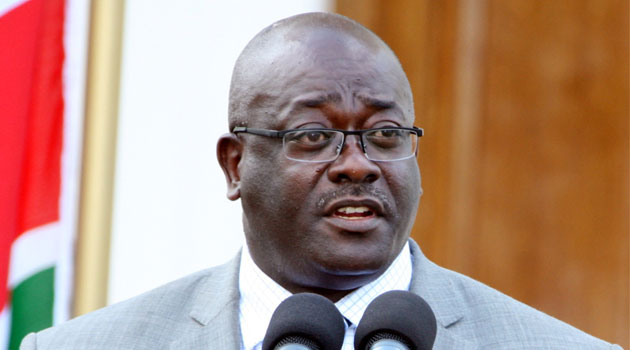
“Once established, the Authority will work out plans for more dams and how we are going to harvest and conserve rainwater,” he said/FILE
NAIROBI, Kenya, Mar 5 – The government is set to launch a National Water Storage and Harvesting Authority in a bid to improve rainwater collection and stocking.
Speaking recently during a two-day water summit held in Naivasha, the Cabinet Secretary in the Ministry of Water and Sanitation, Simon Chelugui, said Kenya was keen to improve its water harvesting capabilities and curb wastage.
“We have a pendulum between floods and drought, but looking forward the new strategic plan of the ministry is to have a fair balance so we are looking at modern ways of conservation and storage,” Chelugui remarked at the summit which ended on Friday.
“Once established, the Authority will work out plans for more dams and how we are going to harvest and conserve rainwater,” he said.
During the summit, participants who included water service providers cited poor water management as a key challenge facing the country, coupled with poor infrastructure.
According to Engineer Daniel Ng’ang’a, the Water Services Providers Association’s Chairperson, up to 43 per cent of water generated in the country is either lost or unaccounted for, a situation that has hampered the development of better infrastructure owing to diminishing revenues.
“We have to understand that there’s need to rehabilitate networks to reduce wastage because most water services providers are using systems that were done before independence,” he said during the Kenya Water Summit.
Ng’ang’a urged water companies across the country to review management structures in order to bring down the percentage of non-revenue water from the current 43 to 30 per cent by the year 2020.
He noted that revenue generation was a key factor in ensuring consistent water supply especially in urban areas where at least a half of Kenya’s population is expected to be living by 2050, given the current urbanization rate of 4.3 per cent per annum.
“It is important to try and reduce the losses we have in our towns and that can only be done through the upgrade of infrastructure and ensure we have proper management in place,” Ng’ang’a said.
Ng’ang’a’s sentiments were echoed by Meru Governor Kiraitu Murungi who chairs the Council of Governor’s Committee in charge of Water, Forestry, and Mining.
“Water is human right issue and can be a source of conflict if not managed properly. It is anchored in Vision 2030 and is key to the attainment of the Sustainable Development Goals, he said.
Kenya has in the recent past been faced with an unprecedented drought that has affected 3.4 million people most of whom have limited access to clean drinking water.
Water scarcity in Nairobi has, for instance, led to the introduction of rationing program with the city’s water levels at dams supplying the capital with water reported to be sinking.
The national per capita water supply per annum also remains low standing at 647 cubic meters.
The globally recommended threshold is 1,000 cubic meters per capita.










































